The impacts of climate change are felt everywhere, from equatorial Singapore to Arctic Norway, but not to the same degree. Warming in the Arctic occurs nearly four times faster than the global mean, making the region a key spot to study climate change. As a climate scientist, I have worked in equatorial, tropical, and temperature climate regions, but always wanted to visit and work in the polar region. I believe that to become a better climate scientist, one must experience and understand different climatic conditions. In May 2022, the Earth Observatory of Singapore (EOS) gave me the opportunity to travel to Norway for the first time. This Arctic trip changed how I see my life.
Norway has always been a pioneer in oceanographic research and ocean expeditions. Henrick Mohn (1835-1916), Fridtjof Nansen (1861-1930), Bjørn Helland-Hansen (1877-1957), Vilhelm Frimann Koren Bjerknes (1862-1951), Harald Sverdrup (1888-1957) made extraordinary contributions to ocean research. I often refer to these pioneers in my research that aims to understand the role of ocean dynamics on sea-level changes.
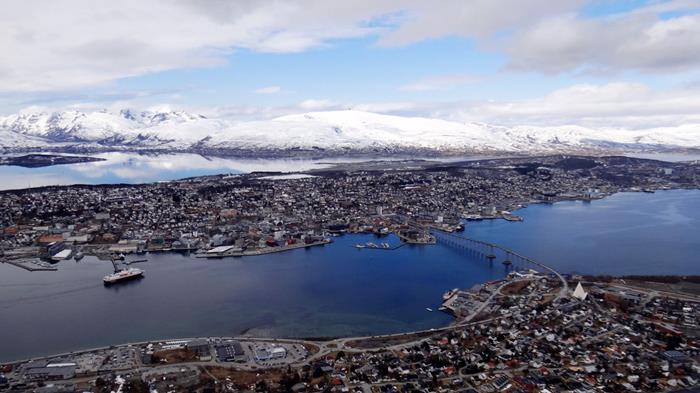
Tromsø and surrounding islands from the top of mountain ledge Storsteinen. (Source: Dhrubajyoti Samanta/Earth Observatory of Singapore)
I started my journey in Tromsø, a city famous for the ocean explorer Roald Amundsen, who was the first person to reach both poles. I joined the Arctic Frontiers 2022 Pathways conference, explored scientific collaborations, and interacted with several leading scientists about my research and societal challenges due to climate change.
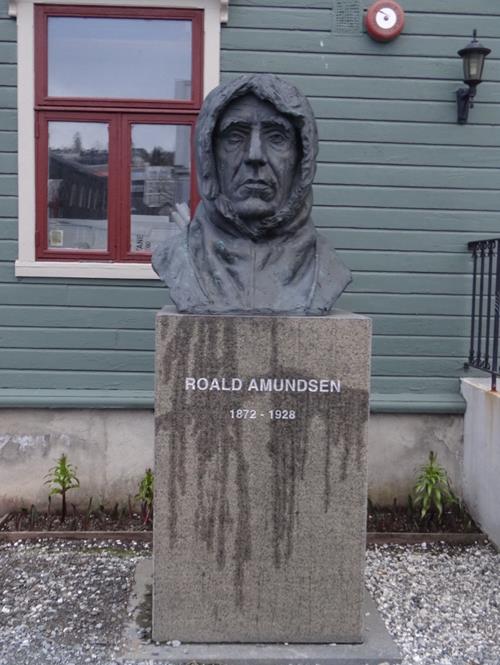 The memorial of the famous ocean explorer Roald Amundsen in Tromsø. (Source: Dhrubajyoti Samanta/Earth Observatory of Singapore)
The memorial of the famous ocean explorer Roald Amundsen in Tromsø. (Source: Dhrubajyoti Samanta/Earth Observatory of Singapore)
Tromsø is situated in the Arctic circle and generally gets sunlight 22-24 hours a day in summer. This was a whole new experience for me. I also experienced heavy snowfalls, which is unusual for the season. This reinforces what the scientists and the local population have observed in recent years: the weather patterns in Tromsø have changed.
I then headed to Longyearbyen, in Svalbard. The visit was simply unforgettable and the trip of a lifetime. As we flew closer to Svalbard, the drift ice started to form a pattern controlled by the warm West Spitsbergen and cold East Spitsbergen currents. I was almost glued to my plane window staring in disbelief. From the front window seat, Professor Benjamin Horton, sea level scientist and Director of EOS leading this trip, drew my attention to the ice cliffs of Svalbard, the unstable walls of ice that would create rapid sea-level rise if they collapsed. As a sea level researcher, I felt very close to what drives my research. I thought I may never see this part of Svalbard look like this again.
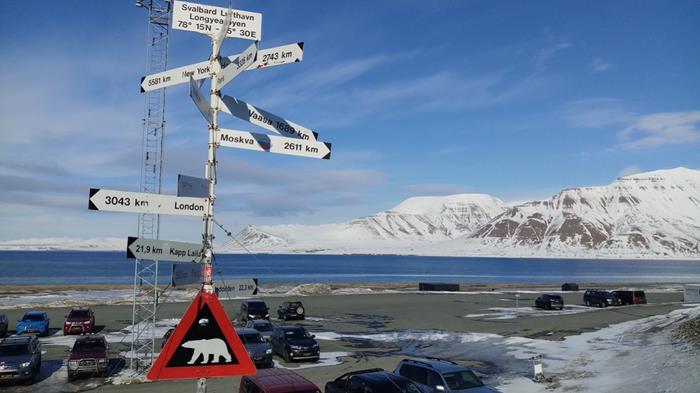 View of Longyearbyen, in Svalbard. (Source: Dhrubajyoti Samanta/Earth Observatory of Singapore)
View of Longyearbyen, in Svalbard. (Source: Dhrubajyoti Samanta/Earth Observatory of Singapore)
Svalbard’s natural beauty stroked me when we reached the world’s largest satellite ground station Kongsberg Satellite Station (KSAT), which is situated at the top of the mountain with spectacular views over the icy island. KSAT consists of 260 antennas at 25 locations and is continuously being developed to meet demand. Since my PhD studies, I have been using various satellite data to study several climate applications. Seeing this ground station and the data collection process showed me exactly how the climate data I use are collected. I was touched by the dedication of the scientists, who work all year long under extreme conditions to improve climate monitoring and many other aspects of our daily lives. It was -15°C when I visited, and I couldn't imagine what it would be like in winter when it is dark all day and temperatures reach -40°C.
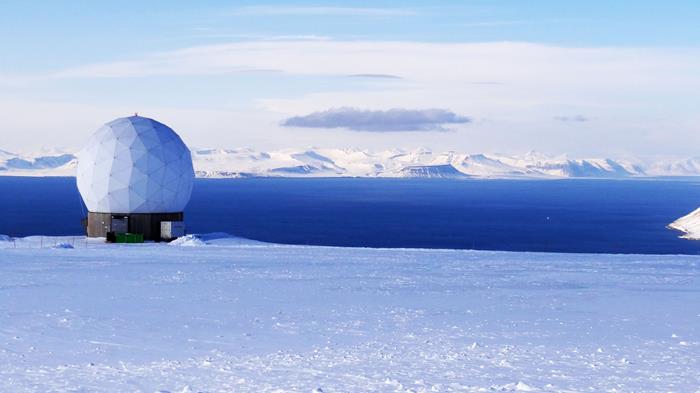 View of the Kongsberg Satellite Services (KSAT), at Longyearbyen, Svalbard. KSAT is the largest satellite station that provides a variety of earth observation and environmental monitoring services from a large portfolio of satellites, including Synthetic Aperture Radar. (Source: Dhrubajyoti Samanta/Earth Observatory of Singapore)
View of the Kongsberg Satellite Services (KSAT), at Longyearbyen, Svalbard. KSAT is the largest satellite station that provides a variety of earth observation and environmental monitoring services from a large portfolio of satellites, including Synthetic Aperture Radar. (Source: Dhrubajyoti Samanta/Earth Observatory of Singapore)
Our visit to Kronpins Haakon, a research vessel designed specifically for gathering oceanographic data in the polar regions, was another highlight of the trip. We visited the onboard facilities of the vessel, which helped me better understand how oceanographic field cruises operate in the polar region.
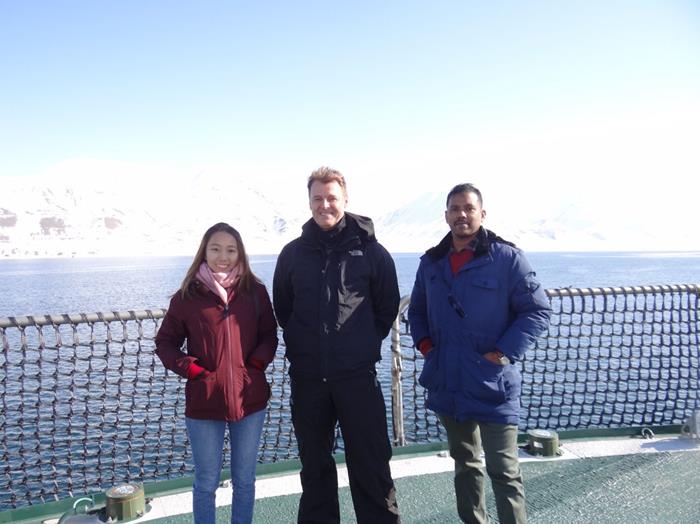 The research team from EOS, on the research vessel Kronpins Haakon, at Longyearbyen, Svalbard. Left to Right: Ms Trina Ng, Prof Benjamin Horton, and Dr Dhrubajyoti Samanta. (Source: Dhrubajyoti Samanta/Earth Observatory of Singapore)
The research team from EOS, on the research vessel Kronpins Haakon, at Longyearbyen, Svalbard. Left to Right: Ms Trina Ng, Prof Benjamin Horton, and Dr Dhrubajyoti Samanta. (Source: Dhrubajyoti Samanta/Earth Observatory of Singapore)
Bergen was my next destination. I had planned a three-week collaborative visit to Bergen as part of my sea level research in Singapore, to work closely with Kristin Richter and Elaine McDonagh from the Norwegian Research Centre (NORCE). I also had the chance to interact with scientists from the Nansen Environmental and Remote Sensing Center. Our discussion covered aspects of ocean dynamics and their role in sea level studies. As a result, I now have a better understanding of oceanographic processes that play a key role in the sea-level changes we experience in Southeast Asia.
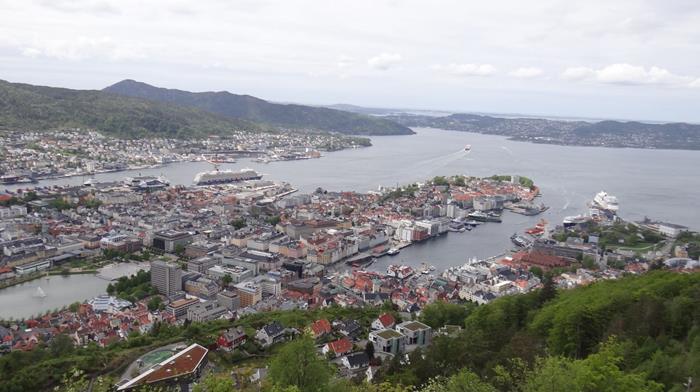 Bergen and North Sea from Fløibanen. (Source: Dhrubajyoti Samanta/Earth Observatory of Singapore)
Bergen and North Sea from Fløibanen. (Source: Dhrubajyoti Samanta/Earth Observatory of Singapore)
Fostering new collaborations was an amazing experience. I hope this trip is the beginning of more collaborations between Norway and Singapore to improve ocean research. It was also wonderful to experience the Arctic climate. I am a better climate scientist now.
Dr Dhrubajyoti Samanta was part of the EOS research team who travelled to Norway to better assess the impacts of the changing polar region on Singapore and Singapore. This trip is featured in the Polar Impact Asia documentary, that you can watch here.